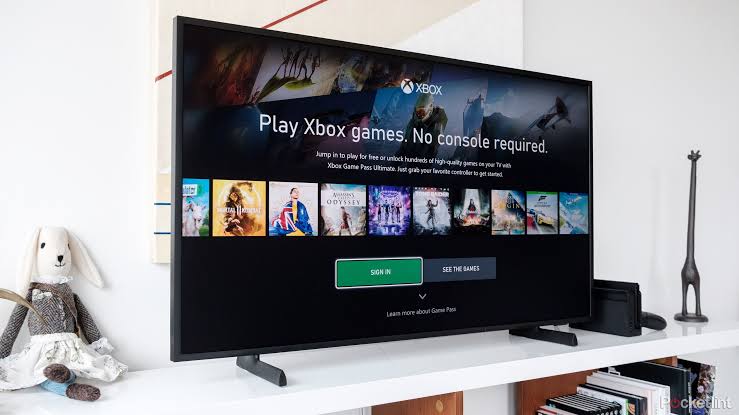Home entertainment has changed significantly over the last decade, and smart TVs have become a central part of this transformation. Unlike traditional televisions, smart TVs combine internet connectivity, streaming services, advanced display technologies, and smart features that enhance the way people consume media. Today, smart TVs are not just for watching movies or live shows; they serve as all-in-one entertainment hubs, offering gaming, music, browsing, and even smart home integration.
Evolution of Smart TVs in Entertainment
Smart TVs started as televisions with built-in internet capabilities, allowing users to access streaming platforms like Netflix and YouTube without additional devices. Over time, they evolved into multifunctional systems with app stores, operating systems, and voice controls. This progression turned them from passive viewing devices into interactive entertainment centers that adapt to diverse user needs.
With regular software updates, smart TVs have become smarter over time, allowing them to stay relevant and offer new features even years after purchase. This has made them an integral part of modern living rooms, replacing many external gadgets.
Streaming Services and On-Demand Content
One of the main benefits of smart TVs is the ability to stream movies, shows, and live sports directly from apps. Users no longer depend on cable subscriptions or physical discs. Platforms such as Netflix, Hulu, Disney+, and Amazon Prime Video are integrated into most smart TVs, providing easy access to vast libraries of entertainment.
This on-demand content has shifted how people consume media. Families can choose what to watch and when, creating personalized entertainment experiences. For younger audiences, YouTube and social media streaming are also readily available, making smart TVs a versatile option for all age groups.
High-Quality Visual and Audio Experience
Smart TVs are equipped with advanced display technologies such as OLED, QLED, and 4K or even 8K resolutions. These features enhance picture clarity, color accuracy, and brightness, delivering cinematic experiences at home. Many models also include HDR support, making movies and games look more realistic with deeper contrast.
Audio quality has also improved, with built-in Dolby Atmos support and AI-enhanced sound systems. This reduces the need for separate soundbars in many cases, though some users still pair them for an even richer experience.
Gaming Capabilities and Cloud Gaming
Gaming has become a major part of home entertainment, and smart TVs are adapting to this demand. Many now support console connections with low-latency modes, high refresh rates, and 4K gaming. In addition, cloud gaming platforms like Xbox Cloud Gaming and NVIDIA GeForce NOW can run directly on smart TVs without the need for a console.
This integration allows gamers to access high-quality games with just a controller and internet connection, turning smart TVs into powerful gaming hubs for casual and serious players alike.
Integration with Smart Home Systems
Modern smart TVs are designed to connect with other smart devices at home. They can act as control hubs for lighting, security cameras, and smart speakers. With voice assistants like Alexa, Google Assistant, and Siri built-in, users can control not only the TV but also their entire smart home ecosystem.
This level of integration makes smart TVs more than entertainment devices; they become central command points for modern households.
Personalized Viewing and AI Features
AI-powered features are increasingly common in smart TVs. These include personalized content recommendations, automatic picture adjustments based on room lighting, and adaptive sound modes. Over time, smart TVs learn viewing habits and suggest movies, shows, or apps tailored to each user.
This personalized experience enhances engagement, ensuring that viewers spend less time searching and more time enjoying content.
Cost Efficiency and Convenience
Smart TVs reduce the need for additional gadgets such as streaming sticks, Blu-ray players, or external speakers in some cases. By consolidating multiple functions into one device, they offer convenience and long-term cost savings. Users only need a stable internet connection to access most entertainment services.
Moreover, app stores allow regular software upgrades, meaning users do not have to frequently replace their devices to enjoy the latest entertainment features.
Future of Smart TVs in Entertainment
As technology advances, smart TVs will likely continue to evolve. The future points toward deeper AI integration, improved VR and AR compatibility, and enhanced cloud gaming capabilities. Additionally, eco-friendly features and energy-efficient designs are expected to become standard.
With 8K becoming more common and virtual assistants getting smarter, the smart TV will remain a key player in shaping the way families enjoy entertainment at home.
Conclusion
Smart TVs have transformed home entertainment systems from simple broadcast receivers into intelligent, multifunctional hubs. They combine streaming, gaming, smart home integration, and personalized AI features in one sleek package. As a result, they are no longer just a device for watching television but the backbone of modern home entertainment.



